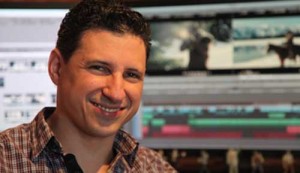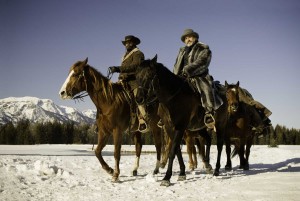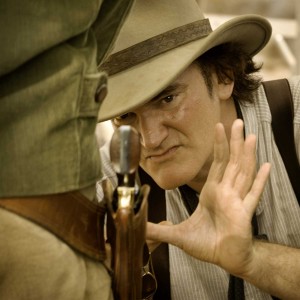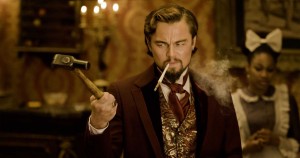
Fred Raskin says he stepped into “enormous shoes” when he took the job to edit Django Unchained for director Quentin Tarantino. This was the director’s first film since the premature passing of his long-time collaborator, editor Sally Menke. Raskin – who had assisted on the Kill Bill movies – was ready for the challenge. Because he had worked with the team previously, he was not only familiar with Tarantino’s cinematic tastes, he shared the director’s love for classic films. “He kept me in the family,” shares Raskin. “We’re both big movie geeks. I would run into him throughout the years at the New Beverly Cinema, the revival house, which he owns. We would have a nice little chat whenever we saw each other.” Tarantino also invited Raskin to screenings to get his opinion on films like Death Proof and Inglorious Bastards, further deepening the relationship.

When Tarantino finished the script for Django, the editor was one of the first people asked to read it. Tarantino also told Raskin that he was screening prints of Tokyo Drift and Fast and Furious before going to a midnight show of Fast Five, which Raskin had just completed. “His producer later told me, I think he might have been evaluating someone’s work when he was doing those screenings,” Raskin says. “It was the greatest honor – I really can’t put it into words – when he asked me to cut the movie. It was tremendously terrifying as well.” Raskin worried that he would be fast enough and work on the same level as Menke, so he studied all the movies she and Tarantino had done together, in order to prepare himself for the test. As far as his experience with Tarantino, Raskin comments, “Getting to see his genius firsthand was pretty remarkable.”

There were a number of challenges editing the film. Tarantino does not like to think about post during production, so the first cut was left up to Raskin. A PA on set would take notes during dailies. “It was primarily writing down where he laughed, because that would be a moment that he liked,” explains Raskin. “I didn’t have a whole lot of specifics to go on putting my first pass together.” It took Raskin four times as long to put a scene together than when they were working together. “He had a solid idea of what he wanted, but for me it was a matter of exploring the footage,” Raskin continues. “The way he lays out his footage, it is pretty apparent how it is supposed to go together. The challenge is that you have eight takes and all the performances are phenomenal. How do you choose what’s better?”

During the compressed four-month post period, it was also a challenge to pare down the film to a length that could be screened. Fortunately, there was an organic editorial workflow that included the early incorporation of sound from designer Wylie Stateman and his crew. This method allowed editorial to use effects that would be in the final, and avoided “temp love,” the trend that occurs when a director falls in love with the temporary audio being used in the picture edit, usually due to the repetitious hearing of that audio. This way of working aided in the timely completion of the film.
Raskin’s original cut, which contained everything shot, was more than four hours long. The released film is two hours, forty-five minutes, including credits. “Figuring out the essence of the movie probably was the biggest challenge,” reveals Raskin. Early in production, a producer asked Raskin what scenes could be lost. When Raskin suggested a scene the producer exclaimed, “You can’t lose that. That scene’s great. We love that scene.” To which Raskin responded, “If a scene’s being great is a reason we can’t lose it, then we’re going to have a problem because we have an embarrassment of riches.”
Fortunately, Raskin had Tarantino by his side to make those difficult decisions of what worked best from all the consistently strong performances and scenes. When they screened the film after the final mix to make sure they were happy with everything, Raskin commented to Tarantino, “You know, I really think we found it. I really think this is the best possible version of the movie.”





